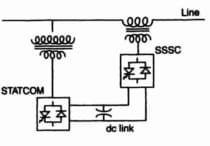 |
| Basic Electronics |
1. The emitter of a transistor is generally doped the heaviest because it________.
a. Must possess low resistance
b. Is the first region of the transistor
c. Has to supply the charge carriers
d. Has to dissipate maximum power
2. An emitter in a bipolar junction transistor is doped much more heavily than the base as it increases the_______.
a. Forward current gain
b. Base transport factor
c. Emitter efficiency
d. All the three given above
3. Which of the following statement is correct ?
a. Emitter region is of high resistivity and heavily doped
b. Emitter region is of high resistivity material and lightly doped
c. Collector region is of higher conductivity than emitter
d. Base region is of low resistivity material and heavily doped
4. The impurity commonly used for realizing the base region of a silicon n-p-n transistor is______.
a. Phosphorous
b. Boron
c. Indium
d. Gallium
5. In a properly biased N-P-N transistor, most of the electrons from the emitter____.
a. Are stopped by the function barrier
b. Recombine with holes in emitter itself
c. Recombine with holes in base
d. Pass to the collector through the base
6. For a npn bipolar transistor, what is the main stream of current in the base region ?
a. Diffusion of electrons
b. Drift of electrons
c. Diffusion of holes
d. Drift of holes
7. For a given emitter current, the collector current can be increased by______.
a. Making the base region more wider
b. Reducing the majority carrier mobility in the base region
c. Doping the emitter region lightly
d. Reducing the recombination rate in the base region
8. Two P-N junction diodes are connected back to back to make a transistor. Which one of the following is correct ?
a. It can be used only for PNP transistor
b. It cannot be used as a transistor due to large base width
c. The current gain of such a transistor will be moderate
d. The current gain of such a transistor will be high
9. Ebers-Model of a transistor represents two diodes______.
a. Back to back
b. In Parallel
c. In Series
d. None of the above
10. In N-P-N transistor, the leakage current is due to______.
a. Flow of holes from collector to base
b. Flow of electrons from collector to base
c. Flow of holes from base to emitter
d. Flow of minority carriers from collector to emitter
11. The phenomenon known as "Early Effect" in a bipolar transistor refers to a reduction of the effective base-width caused by______.
a. The early removal of stored base charge during saturation-to-cutoff switching
b. The forward biasing of emitter-base junction
c. The reverse biasing of the base-collector junction
d. Electron-hole recombination at the base
12. Which one of the following specifications is not correct for a common collector amplifier ?
a. High current gain
b. High voltage gain
c. Low output impedance
d. High input impedance
13. In a common collector amplifier the voltage gain is______.
a. Varies with load impedance
b. Varies with input voltage
c. Less than 1
d. Constant
14. The transistor configuration which provides the highest output impedance is_______.
a. Common collector
b. Common emitter
c. Common base
d. None of the above
15. When a transistor is used in switching mode then what is the turn-on time ?
a. Sum of rise time and fall time
b. Sum of delay time and storage time
c. Sum of rise time and storage time
d. Sum of delay time and rise time
16. For a transistor, turn-off time is________.
a. Sum of rise time and fall time
b. Maximum value of fall time
c. Maximum value of storage time
d. Sum of storage time and full time
17. The voltage divider bias circuit is used in amplifiers quite often because it______.
a. Reduces the cost of the circuit
b. Reduces the dc base current
c. Makes the operating point almost independent of beta
d. Limits the ac signal going to the base
18. In voltage amplifier the load resistance should be ______.
a. Equal to input impedance
b. Equal to output impedance
c. As small as possible
d. As large as possible
19. An ideal amplifier_______.
a. Has + ve feedback
b. Gives the uniform frequency response
c. Has infinite voltage gain
d. Responds only to signals at its input terminals
20. Operating point shift can occur in an amplifier due to which one of the following?
a. Power supply fluctuation
b. Parasitic capacitances
c. Noise at the input
d. Input frequency variation
21. In a transconductance amplifier, it is desirable to have_______.
a. A large input resistance and a large output resistance
b. A large input resistance and a small output resistance
c. A small input resistance and a large output resistance
d. A small input resistance and a small output resistance
22. Generally, the gain of a transistor amplifier falls at high frequencies due to the______.
a. Coupling capacitor at the output
b. Skin effect
c. Coupling capacitor at the input
d. Internal capacitance of the device
23. The action of JFET in its equivalent circuit can best be represented as a______.
a. Voltage controlled Current Source
b. Voltage controlled Voltage source
c. Current controlled Current source
d. Current controlled Voltage source
24. A FET_______.
a. Incorporates a forward-biased junction
b. Uses a high-concentration of a magnetic field for its operation
c. Depends on the variation of a magnetic field for its operation
d. Depends on the variation of the depletion layer width with reverse voltge for its operation
25. The small value of drain-to-source voltage, JFET behaves like a_______.
a. Negative resistance
b. Constant voltage source
c. Constant current source
d. Resistor





0 Comments
If you have any doubt, feel free to ask.